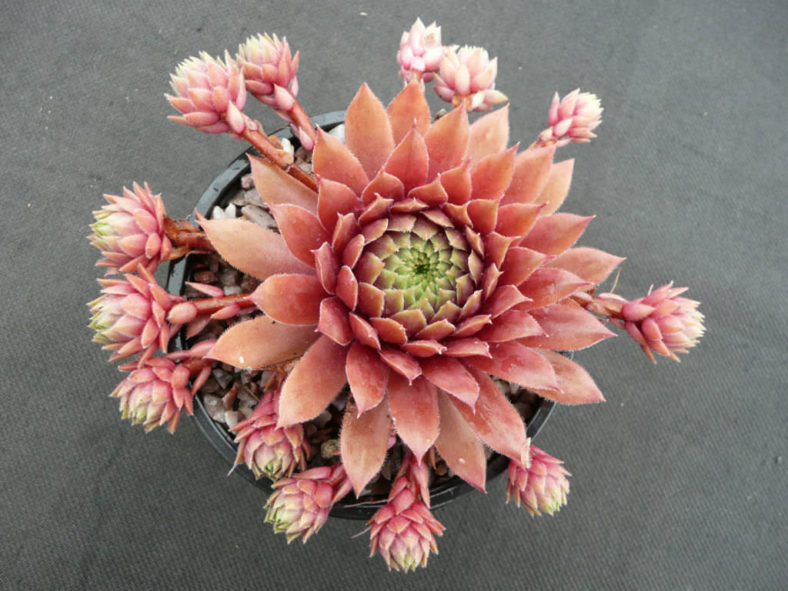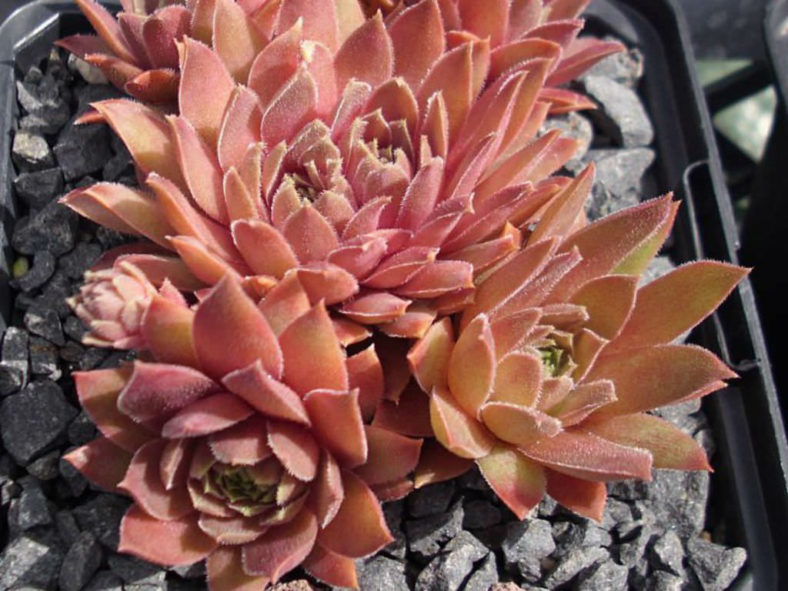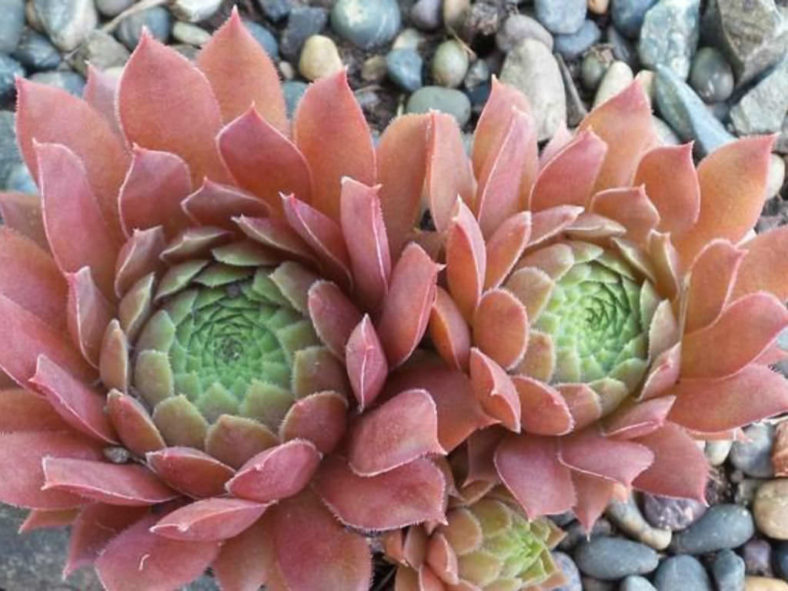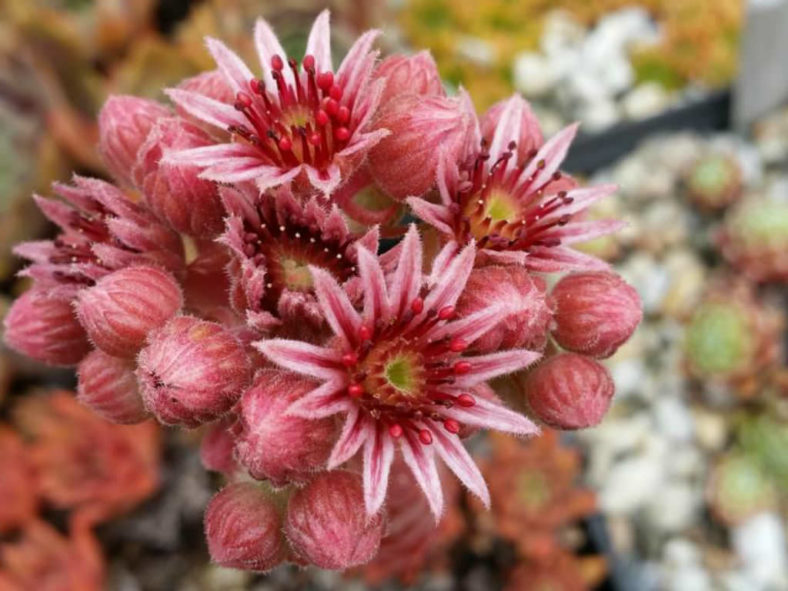Scientific Name
Sempervivum 'Faramir'
Common Name(s)
Hens and Chicks
Scientific Classification
Family: Crassulaceae
Subfamily: Sedoideae
Tribe: Sedeae
Subtribe: Sedinae
Genus: Sempervivum
Origin
Sempervivum 'Faramir' is a hybrid created by Betty Z. Bronow in the United States in 1989. It is part of the "Lord of the Rings" series and results from a cross between Sempervivum 'Bronze Pastel' and Sempervivum 'Jungle Fires'.
Description
Sempervivum 'Faramir' is an attractive small succulent with fleshy, honey-pink leaves clustered around a soft green center. The rosettes can reach a diameter of 4 inches (10 cm).
The star-shaped, reddish-purple flowers appear in a dense cluster on a leafy stalk that arises from the center of the rosette. The flower stalk can grow up to 8 inches (20 cm) tall. The rosettes die after flowering but produce many offsets that continue to grow.

How to Grow and Care for Sempervivum 'Faramir'
Hardiness: USDA hardiness zones 4a to 9b: from -30°F (-34.4°C) to 30°F (-1.1°C).
Sempervivums are not difficult to grow, provided they are not waterlogged and killed by excess watering. They can be easily grown outdoors and in containers, and they earned the name "Houseleeks" because they tend to root on the roofs of houses. It will naturally die after the mother plant flowers, but by this time, the plant has likely produced many offsets that will continue to grow. These are excellent for cold windows. Sempervivum earned its popular name, "Hen and Chicks," from their growth habit. The mother plant, or hen, sends off numerous offsets, clustering around her base like chicks. These offsets can be easily repotted, or the plants can be left to form a clumping mat.
Repot as needed, preferably during the warm season. To repot a succulent, ensure the soil is dry before repotting, then gently remove the pot. Knock away the old soil from the roots, removing any rotted or dead roots. Treat any cuts with a fungicide. Place the plant in its new pot and backfill it with potting soil, spreading the roots out as you repot. Leave the plant dry for a week or so, then begin to water lightly to reduce the risk of root rot.
Learn more at How to Grow and Care for Sempervivum.
Links
- Back to genus Sempervivum
- Succupedia: Browse succulents by Scientific Name, Common Name, Genus, Family, USDA Hardiness Zone, Origin, or cacti by Genus
Photo Gallery
Click on a photo to see a larger version.


